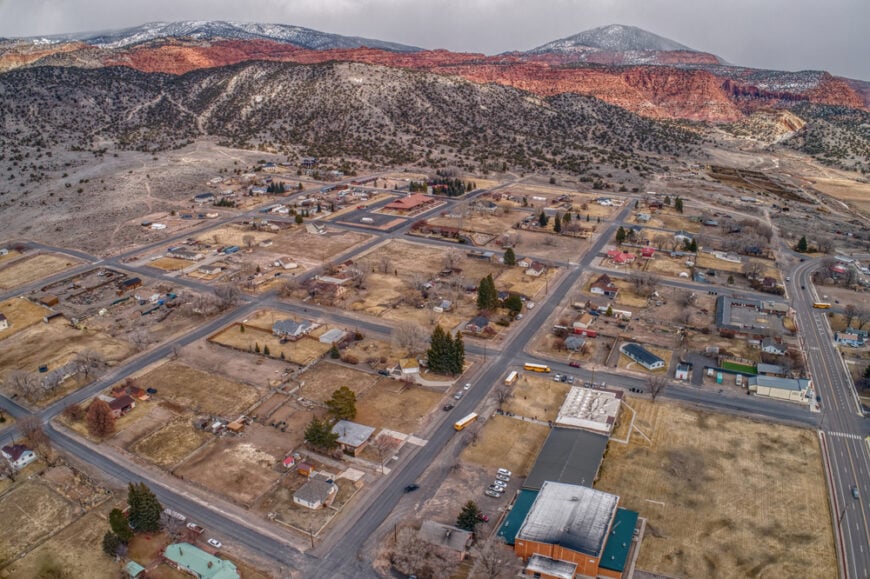
There’s a quiet, stubborn beauty in the Henry Mountains—a range so often overlooked it feels like it’s hiding on purpose. South-central Utah is a land shaped more by erosion than ambition, more by wind than by noise. Out here, the towns don’t announce themselves. They emerge slowly from the landscape—faintly at first, like Fremont’s weathered barns or the low-slung roofs of Hanksville rising out of the sage. The Henrys, named for Joseph Henry, a scientist who never laid eyes on them, were the last mountain range in the continental U.S. to be mapped. That remoteness remains baked into everything that surrounds them.
This isn’t a place of spectacle—it’s a place of presence. The road to Boulder climbs through slickrock and silence. In Torrey, cottonwoods rustle over empty sidewalks and sandstone homes that haven’t changed in decades. You don’t come here for convenience or crowd-sourced recommendations. You come to slow down, to listen, to let the rhythm of land and sky take over. These 10 towns offer something rare: not curated charm or picture-perfect branding, but real, lived-in solitude. They exist on the edge of wilderness, tethered to land and weather, not cell towers or deadlines.
People here still read the clouds. They notice when the wind shifts. And when you ask for directions, chances are you’ll get a story instead. These aren’t ghost towns. They’re working communities—quiet, distant, and deeply rooted. If there’s still such a thing as off the map, it probably starts somewhere near Notom.
10. Boulder: An Oasis of Calm Amidst Red Rock Country
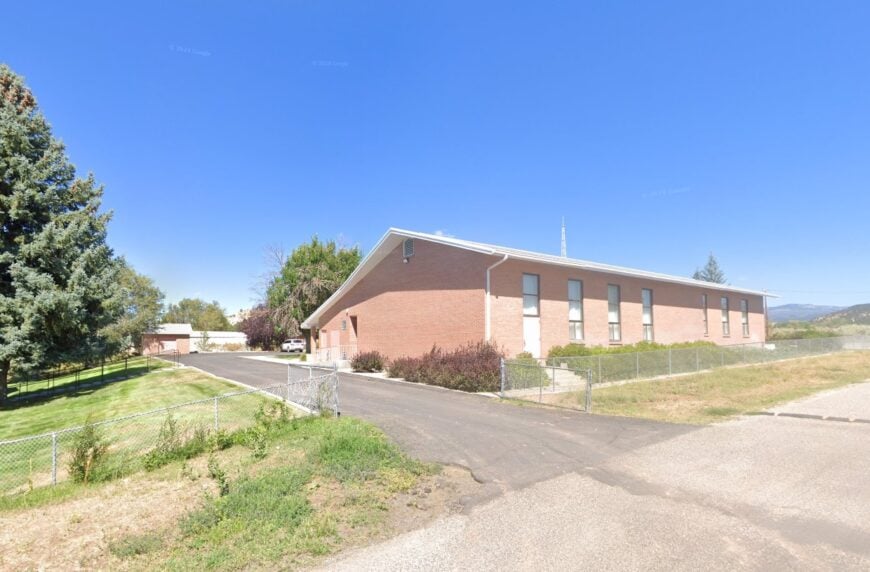
Boulder, with a population of just over 200 residents, is a tranquil oasis nestled amidst Utah’s stunning red rock country. Known for its breathtaking scenery, Boulder offers outdoor enthusiasts endless opportunities for hiking, canyoneering, and exploring nearby Grand Staircase-Escalante National Monument. The town is home to the renowned Burr Trail Grill and Hell’s Backbone Grill, both highlighting local cuisine and culture.
Agriculture and small-scale tourism are primary industries, reflecting the town’s deep connection to the land. Boulder’s seclusion is amplified by its location along Scenic Byway 12, one of the most remote highways in the state, and its lack of cellular service in many areas. This isolation allows visitors and locals alike to disconnect and fully immerse themselves in the natural beauty surrounding them.
Where is Boulder?

Boulder is located in south-central Utah, perched on the edge of the Aquarius Plateau and at the entrance to the Grand Staircase-Escalante National Monument. Its remote setting is due in part to the rugged terrain and limited road access; in fact, Boulder was one of the last towns in the continental U.S. to receive mail by mule train. To reach Boulder, you can take Scenic Byway 12 from either Torrey to the north or Escalante to the south, both routes offering awe-inspiring views but few signs of civilization. The town’s isolation makes it a haven for those looking to escape the hustle and bustle and experience the quiet majesty of Utah’s wilderness.
9. Bicknell: Small Town Charm and Big Skies
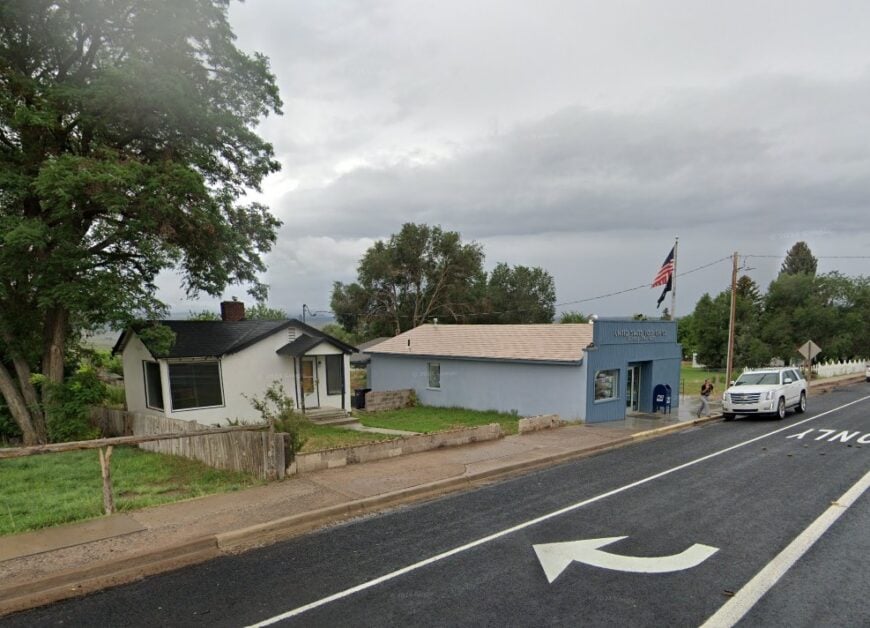
Bicknell is a quaint town with approximately 300 residents, embodying the essence of small-town charm amidst Utah’s vast landscapes. Visitors and locals enjoy stargazing under some of the darkest skies in the country, as well as exploring nearby Capitol Reef National Park. The town is known for the historic Bicknell Theater and for hosting the annual “Bicknell International Film Festival,” celebrating quirky cinema in a unique rural setting.
Agriculture, particularly cattle ranching and farming, is the main industry, fostering a close-knit community centered around the land. Bicknell’s seclusion stems from its location off the beaten path, away from major highways and urban centers. The expansive skies and surrounding mountains contribute to a profound sense of openness and tranquility.
Where is Bicknell?

Situated in Wayne County, central Utah, Bicknell lies along State Route 24, just a few miles west of Capitol Reef National Park. Its remote position is accentuated by the sparse population of the surrounding area and the vast stretches of uninhabited land. The town can be reached by driving east from Interstate 70 or south from the small city of Richfield, but with few towns in between, the journey itself feels like a step back in time. Bicknell’s isolation offers a peaceful retreat, making it an ideal destination for those seeking solace and a connection to nature without the distractions of modern urban life.
8. Loa: Peaceful Farmlands Under Mountain Shadows

Loa, home to around 500 residents, is a serene agricultural hub nestled under the shadow of the Thousand Lake Mountain. The town offers a peaceful rural lifestyle, with opportunities to enjoy fishing in the nearby Fremont River and exploring scenic drives through Fishlake National Forest. Key industries include farming and ranching, reflecting the town’s rich agricultural heritage.
Loa’s seclusion is characterized by its distance from major cities and the encompassing natural landscapes that create a buffer from the outside world. The slow-paced life and friendly community make Loa a hidden treasure for those valuing simplicity and connection to the land.
Where is Loa?
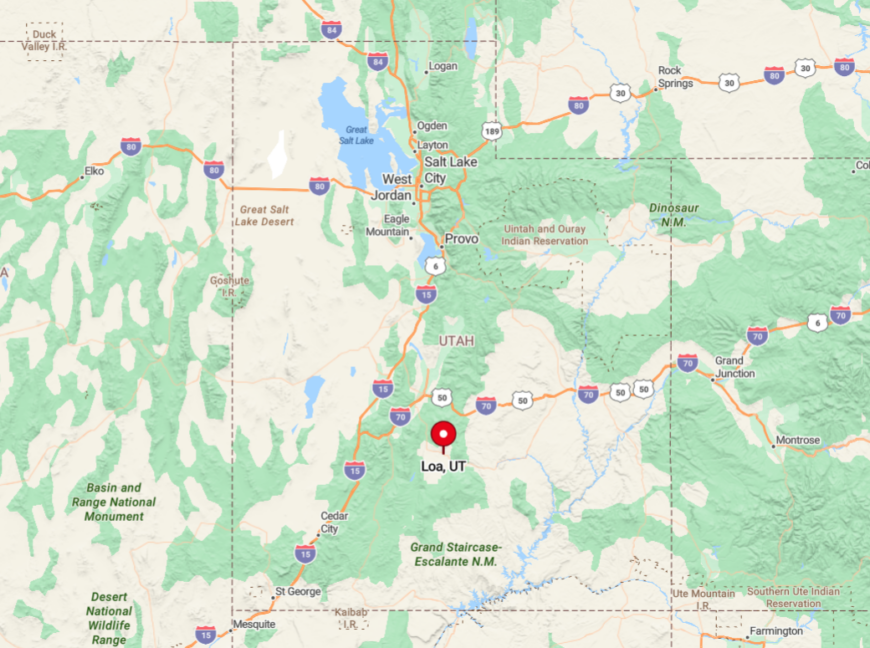
Located in the heart of Wayne County, Loa serves as the county seat and is positioned along State Route 24. The town’s remote setting is heightened by the surrounding mountains and deserts, making it a quiet enclave away from bustling traffic. Accessible via scenic routes from Richfield or Capitol Reef National Park, reaching Loa involves traversing winding roads with panoramic views. This remoteness contributes to its peaceful atmosphere, as the limited accessibility deters crowds, allowing residents and visitors to fully embrace the tranquility of Utah’s countryside.
7. Torrey: A Quiet Gateway to Wilderness

Torrey, with a population of about 250 people, is a charming town that serves as a tranquil gateway to the wilderness of Capitol Reef National Park. Outdoor enthusiasts can enjoy hiking, horseback riding, and scenic drives through the stunning Waterpocket Fold geological formation. The local economy revolves around tourism, with quaint lodges, restaurants, and art galleries that cater to visitors seeking a quiet retreat.
Torrey’s seclusion is evident in its unhurried pace and the vast stretches of untouched nature that surround it. The town’s tree-lined streets and historic sandstone buildings add to its peaceful, rustic charm, making it an ideal spot for those looking to unwind and connect with nature.
Where is Torrey?
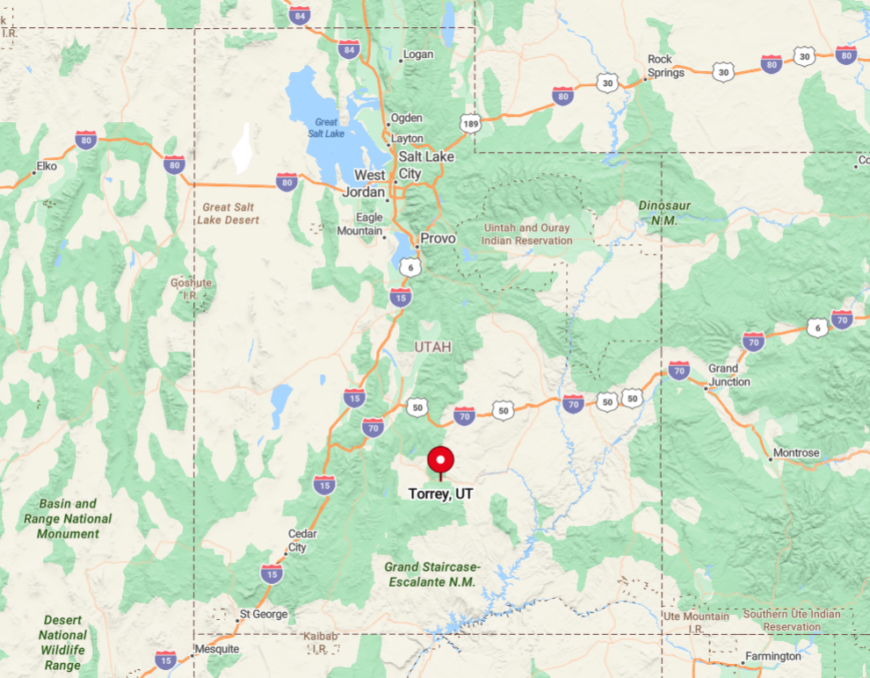
Nestled along State Route 24 in south-central Utah, Torrey sits just eight miles west of the Capitol Reef National Park entrance. Its remote location is accentuated by the surrounding mountain ranges and desert landscapes, which create natural barriers from the outside world. Access to Torrey comes primarily from Scenic Byway 12 or by driving through the high desert from Interstate 70, both routes offering minimal signs of civilization. This geographical isolation ensures that Torrey remains a serene destination, away from crowded tourist hotspots, where the beauty of the landscape takes center stage.
6. Fremont: Rustic Living Under the Open Sky

Fremont is a small community of around 150 residents that embodies the essence of rustic living under Utah’s expansive skies. The town offers a peaceful environment for outdoor activities like fishing in nearby lakes, hiking through picturesque trails, and wildlife watching in the surrounding forests. Farming and ranching are the primary industries, with generations of families cultivating the fertile lands of the Fremont River Valley.
Fremont’s seclusion stems from its off-the-beaten-path location and the close-knit nature of its community. The absence of commercial development preserves its quiet, rural atmosphere, making it an appealing destination for those seeking simplicity and serenity.
Where is Fremont?

Located in Wayne County, Fremont is situated northwest of Loa along State Route 72. The town’s remote setting is highlighted by its proximity to Fishlake National Forest and the distant Henry Mountains, providing a backdrop of natural beauty in every direction. Reaching Fremont involves traveling through scenic byways that wind through mountains and valleys, away from major highways and urban centers. This remoteness contributes to Fremont’s peaceful ambiance, offering an escape where one can appreciate the uninterrupted landscapes and star-filled night skies that are becoming increasingly rare.
5. Hite: Where the Colorado River Meets Solitude
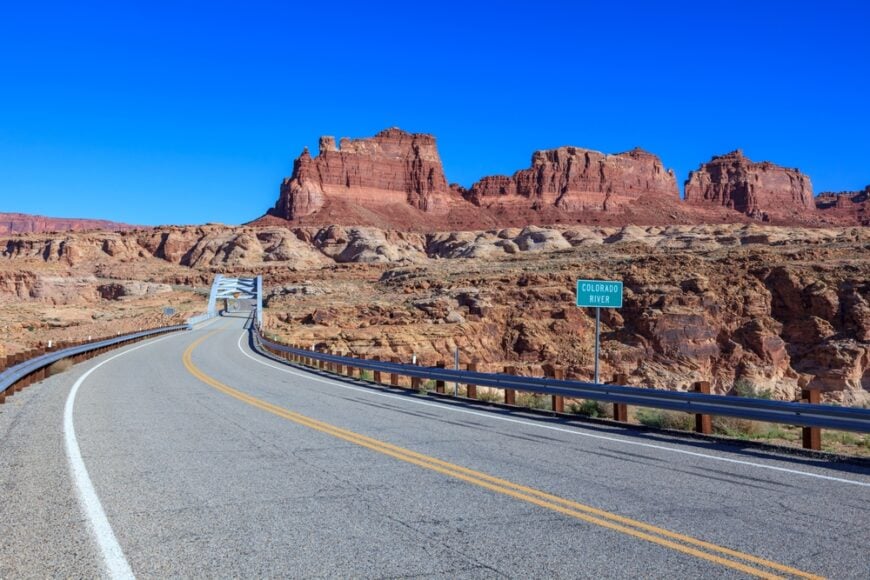
Hite is a sparsely populated outpost along the upper reaches of Lake Powell, where the Colorado River meets the towering red cliffs of Glen Canyon. Though not a traditional town, Hite offers a marina and ranger station, serving as a gateway for adventurers seeking solitude on the water or in the surrounding canyonlands. Recreational activities include boating, kayaking, fishing, and exploring the remote backcountry trails.
The primary function of Hite is to support tourism and recreation, but its remote location and minimal facilities emphasize its secluded nature. The vast, uninhabited landscapes around Hite make it a haven for those looking to escape into the quiet embrace of the desert.
Where is Hite?

Hite is located in a remote area of southeastern Utah, at the northern end of Lake Powell within the Glen Canyon National Recreation Area. Accessible via State Route 95, it is a significant distance from any major towns or cities, with the nearest small communities miles away. The journey to Hite involves traversing vast stretches of desert highways with few signs of civilization, enhancing the sense of seclusion upon arrival. Its geographical isolation on the banks of the Colorado River offers unparalleled access to some of the most untouched natural areas in the state, making the trip worthwhile for those seeking true solitude.
4. Ticaboo: A Desert Haven Near Lake Powell
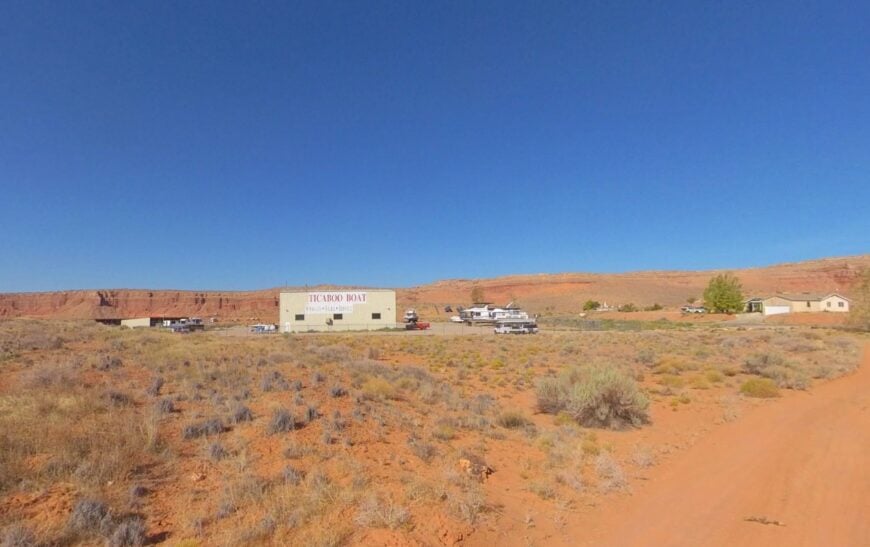
Ticaboo is a small, unincorporated community with a population of fewer than 100 residents, serving as a desert haven near the shores of Lake Powell. The area provides ample opportunities for outdoor recreation like off-roading, boating, hiking, and exploring the intricate network of slot canyons in the region. Tourism is the main industry, catering to adventurers and travelers looking for accommodations close to the remote northern reaches of Lake Powell.
Ticaboo’s seclusion is a result of its remote desert location, surrounded by vast stretches of rugged terrain and minimal development. The town provides a quiet base for exploration, allowing visitors to experience the solitude and majesty of Utah’s desert landscapes.
Where is Ticaboo?
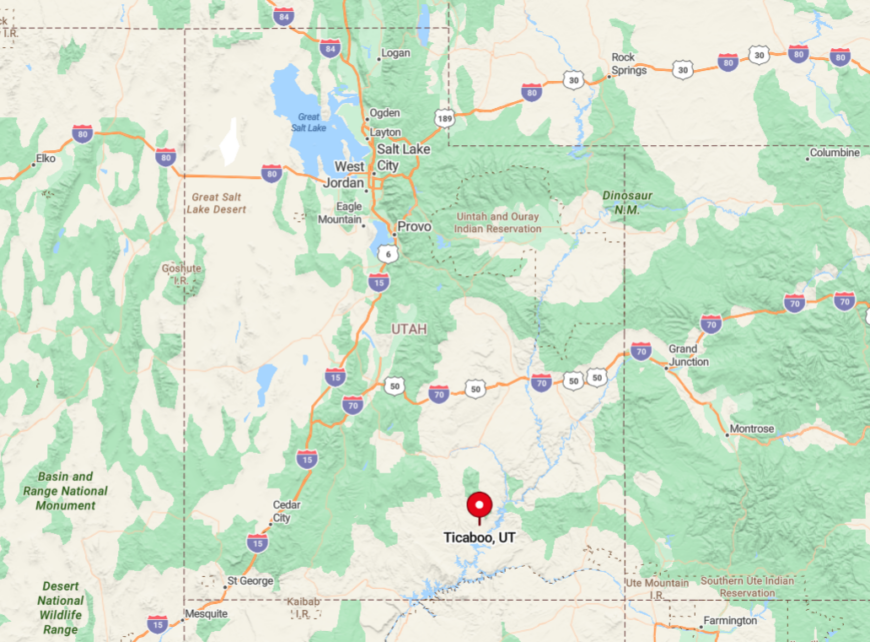
Situated along State Route 276 in southeastern Utah, Ticaboo is approximately 12 miles north of Lake Powell’s Bullfrog Marina. The community is encircled by the red rock deserts of the Glen Canyon National Recreation Area and is distant from major highways and urban centers. Getting to Ticaboo typically involves a long drive through remote areas, with the nearest sizable town being Hanksville, about 70 miles to the north. This isolation enhances the town’s appeal for those wanting to immerse themselves in the natural beauty and quiet of the desert without the distractions of busy tourist destinations.
3. Notom: Serenity at the Edge of Capitol Reef
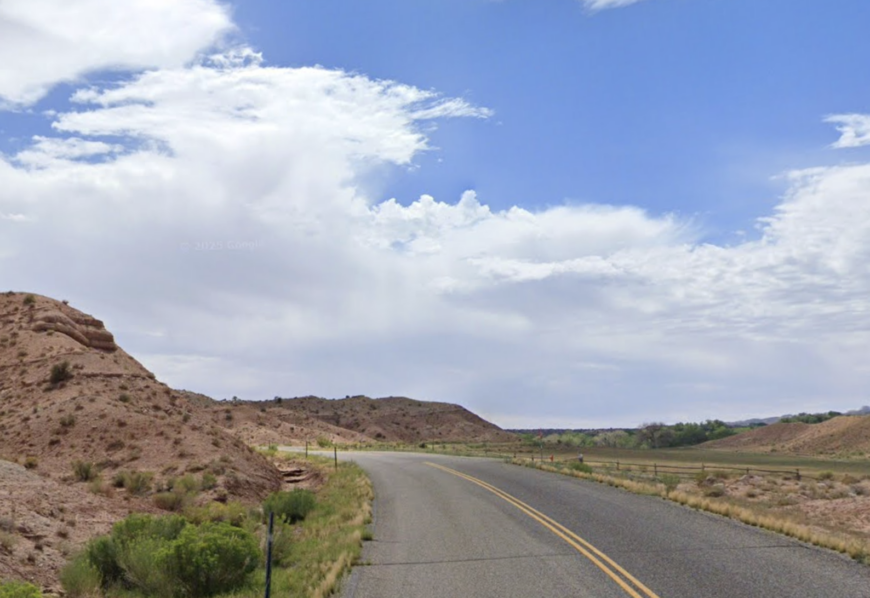
Notom is a tiny hamlet with a few scattered residences, offering unparalleled serenity at the eastern edge of Capitol Reef National Park. The area is a paradise for hikers and backcountry explorers, with access to less-traveled trails and scenic drives such as the Notom-Bullfrog Road. Agriculture, mainly small-scale ranching, is the mainstay for the few families that call Notom home.
The seclusion of Notom is profound, marked by its sparse population and the vast expanse of rugged landscapes that surround it. The lack of commercial amenities reinforces the sense of isolation, making it an ideal spot for those seeking a deep connection with nature.
Where is Notom?
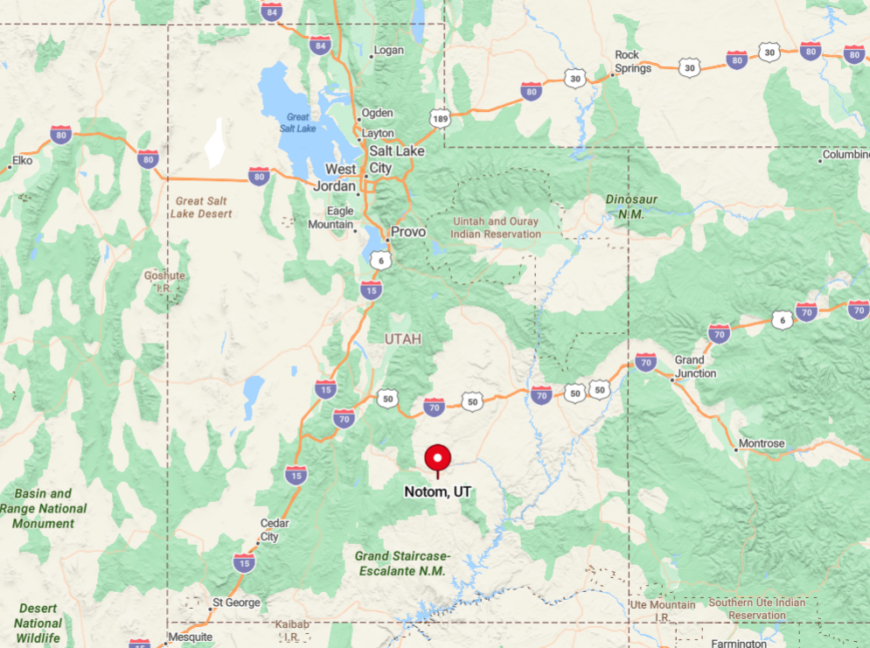
Located in south-central Utah, Notom lies along the eastern boundary of Capitol Reef National Park, accessible via the Notom-Bullfrog Road off State Route 24. The road itself is remote and often unpaved, passing through some of the most pristine and untouched areas of the park.
Reaching Notom requires careful planning and a readiness for rugged travel conditions, as services and facilities are virtually nonexistent. This remoteness is part of Notom’s charm, providing a true escape into the solitude of Utah’s canyon country, far removed from the noise and crowds of more accessible destinations.
2. Caineville: A Hidden Gem Amidst Sandstone Cliffs
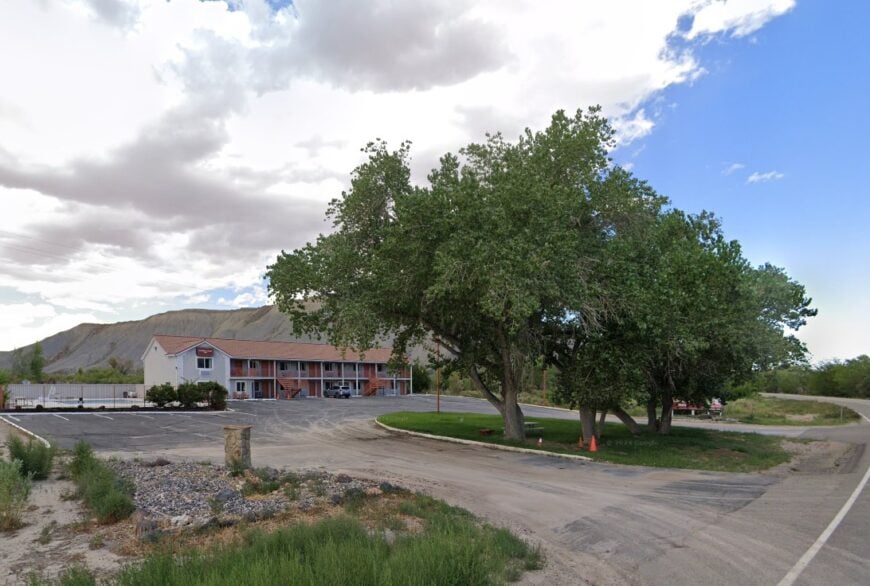
Caineville, with a population of fewer than 20 people, is truly a hidden gem nestled amidst dramatic sandstone cliffs and barren landscapes. The area is a favorite among photographers and geologists for its unique landforms, such as Factory Butte and the surrounding badlands.
While there are limited accommodations and services, visitors can enjoy off-roading, fossil hunting, and exploring remote trails. Caineville’s main industry is tied to tourism, albeit on a very small scale, focusing on those who seek out its seclusion and stark beauty. The town’s remoteness and minimal infrastructure contribute to its secluded atmosphere, offering a quiet refuge for solitude seekers and adventurers alike.
Where is Caineville?
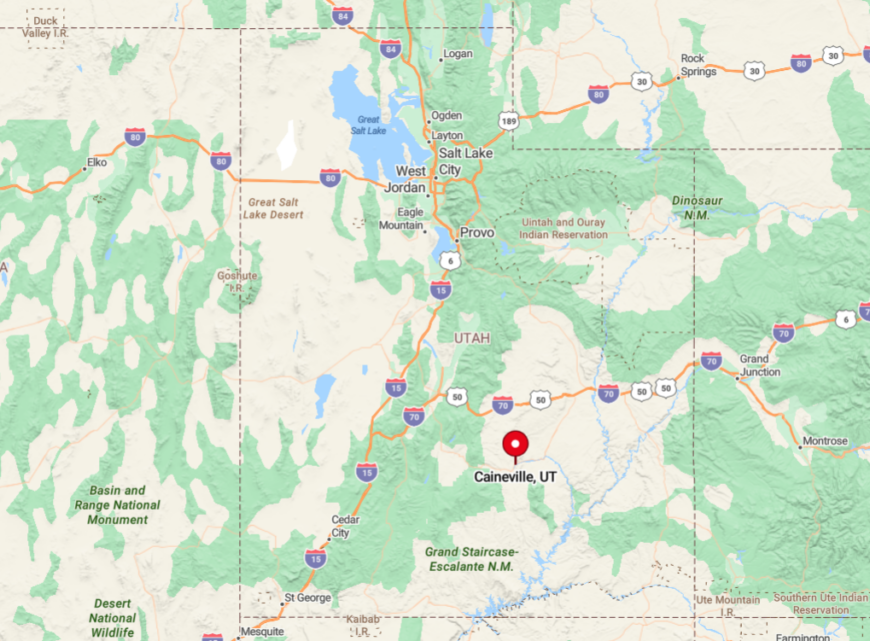
Caineville is located along State Route 24, approximately 18 miles east of Capitol Reef National Park in Wayne County, Utah. The town is flanked by striking geological features and lies in one of the most sparsely populated regions of the state. Accessing Caineville involves traveling on remote stretches of highway with few amenities, underscoring its isolation. The surrounding moonscape-like terrain adds to the sense of otherworldliness, making Caineville a perfect destination for those looking to experience the unique and unspoiled beauty of Utah’s desert environment without the interruptions of modern life.
1. Hanksville: Gateway to Remote Desert Landscapes
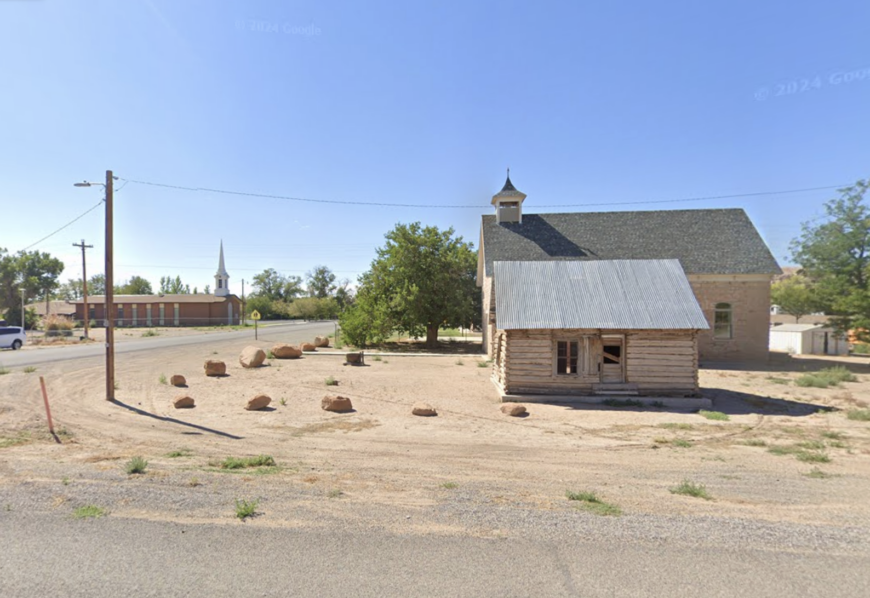
Hanksville, with a population of around 250 residents, serves as a gateway to some of Utah’s most remote and breathtaking desert landscapes. The town is a hub for adventurers looking to explore nearby attractions like Goblin Valley State Park, the Mars Desert Research Station, and the intricate slot canyons of the San Rafael Swell. Key industries include tourism and agriculture, with local businesses catering to travelers and supporting the farming and ranching needs of the community.
Hanksville’s seclusion is characterized by its vast open spaces and the surrounding rugged terrain that isolates it from larger urban areas. The town’s quiet streets and friendly atmosphere provide a welcoming respite for those journeying through the heart of Utah’s canyon country.
Where is Hanksville?
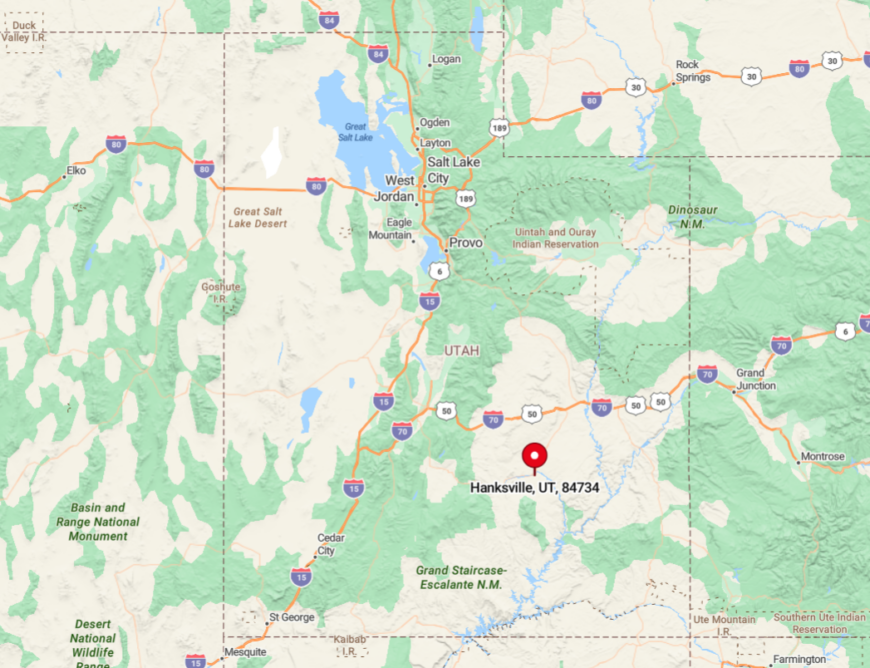
Situated at the junction of State Routes 24 and 95 in southeastern Utah, Hanksville lies between Capitol Reef National Park to the west and Canyonlands National Park to the east. Its remote location is accentuated by the long stretches of highway that connect it to other towns, with expansive desert landscapes in all directions.
The nearest city of significant size is Richfield, over 100 miles away, making Hanksville a true outpost in the desert. Access is primarily via scenic but isolated routes, enhancing the town’s seclusion and appeal to those seeking adventure and solitude in equal measure.






